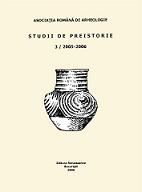On Men and Pigs: Were Pigs Domesticated at Mesolithic Iron Gates of the Danube?
On Men and Pigs: Were Pigs Domesticated at Mesolithic Iron Gates of the Danube?
Author(s): Meiggs David, Andrei Dorian Soficaru, Miritoiu Nicolae, Dinu Alexandru, Vasile Boroneanţ, Adrian BălăşescuSubject(s): Archaeology
Published by: Editura Cetatea de Scaun
Keywords: Iron Gates; Mesolithic; transition; pig domestication
Summary/Abstract: This paper is a part of a more extensive study regarding the possibility of pig domestication at Mesolithic Iron Gates sites. The study is concerned only with the sites found on the Romanian shore of the Danube River. The aim of this paper is to present arguments answering to questions related to the possibility of pig domestication at Iron Gates. However, this is a complex question that requires a much more in depth investigation. Nevertheless, the figures provided here may offer interesting clues regarding Mesolithic economic developments at some Danube Canyon sites. According to the data presented above, the teeth sizes of Iron Gates Mesolithic pigs cluster separately from the Neolithic pigs of Căscioarele and Borduşani. The DNA analysis revealed that the Iron Gates pigs displayed the same characteristics as wild European pigs, while the samples from Căscioarele and Borduşani were associated with Neolithic Asia Minor pigs. It may be only assumed that because the batches from Căscioarele and Borduşani display values that almost superimpose, the two pig populations could have the same genetic affiliation. The same may also be true for the pig population from Măriuţa. Moreover, it appears that at all excavated levels from site Icoana pigs were killed rather indiscriminately, regardless of age and sex, a practice rather associated with hunting than animals keeping.
Journal: Studii de Preistorie
- Issue Year: 2005
- Issue No: 3
- Page Range: 77-98
- Page Count: 21
- Language: English

